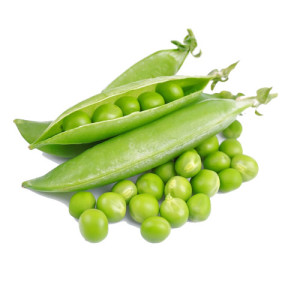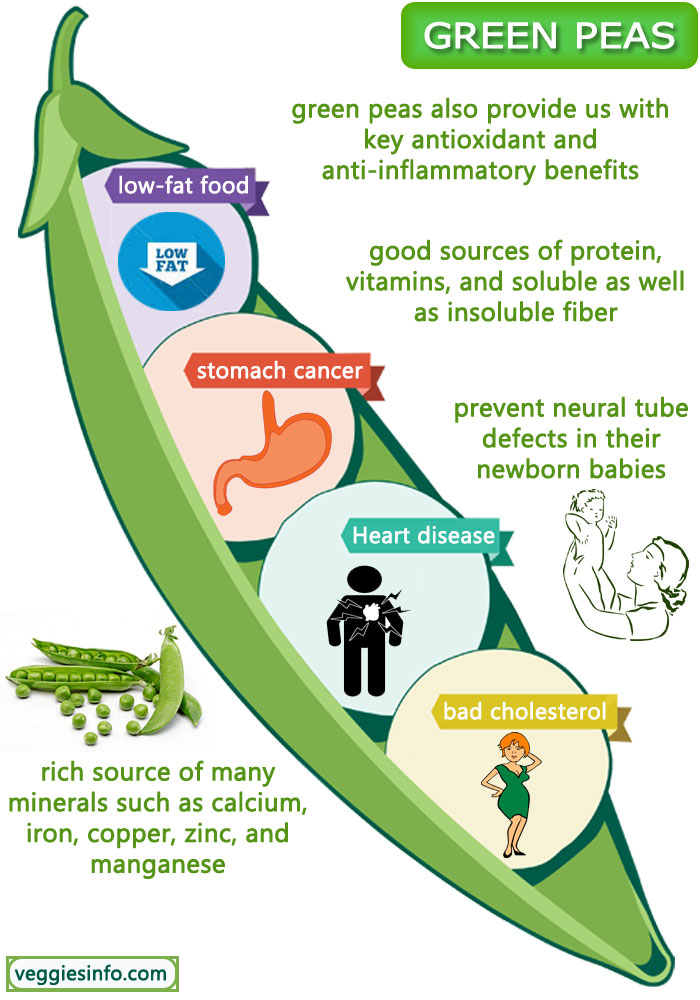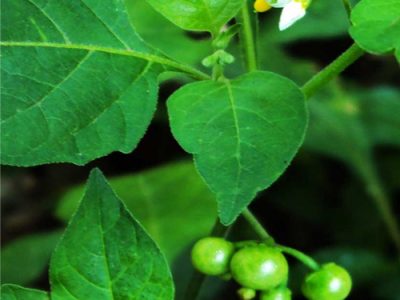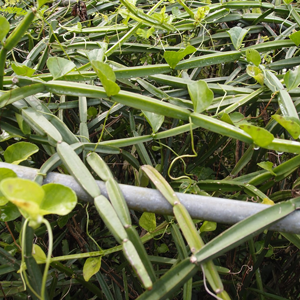
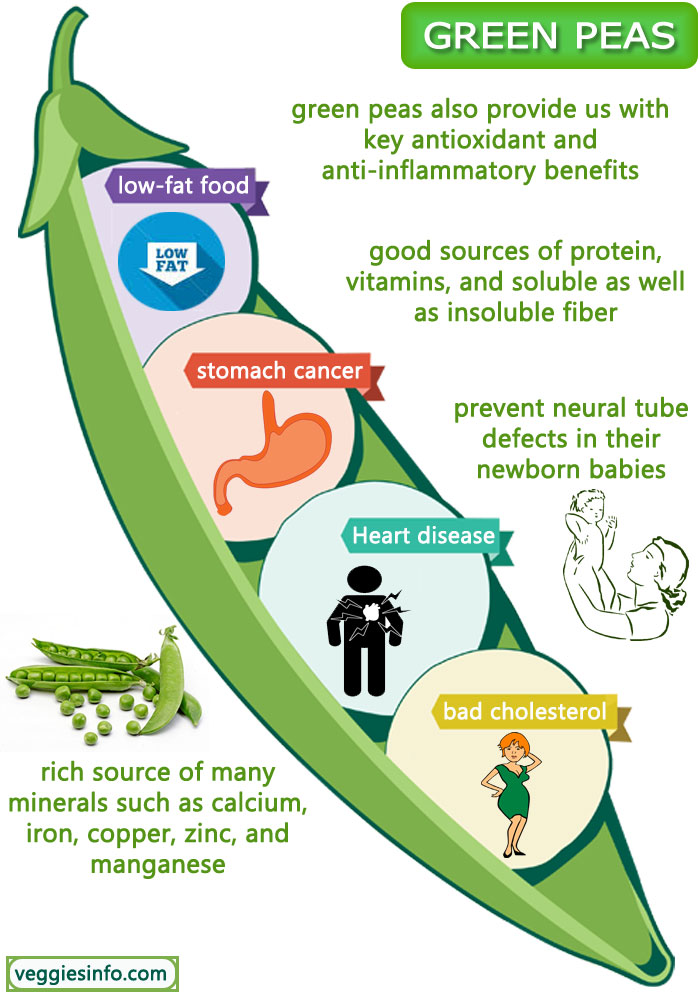
Health Benefits Of Green Peas Consumption
About Green Peas
Scientifically known as Pisum sativum green peas was the first crop cultivated by humans. It belongs to the legume family also known as pea family with relative crops like chickpea, black eyed peas, beans etc. These vegetable are grown in small pods that has tiny seeds that are edible. The pod of the plant is also used for consumption in many countries. Being the first plant being cultivated by humans; peas were originated in Middle Eastern countries 10,000 years ago. Wild peas were found in the African jungles of Ethiopia, Afghanistan and Iran. This civilization then spread towards the European countries and India. They were treated as an item of luxury during the advent of peas in European countries and were grown in home gardens and presented to the royals as a token of love care and affection. Normally green in colour sometimes even yellow or purple in shade green peas are eaten fresh and immature. They grow in mild to cold climatic regions and fail to thrive in extremely hot temperature. They grow in vines and their branches are used as pea brush.
Green peas are a vegetable that belongs to the legume family. They are small, round and green in color and are eaten either fresh or frozen. Green peas are packed with nutrition and offer a wealth of health benefits. Green peas are a good source of vitamins, minerals, dietary fiber, and protein. They contain high amounts of Vitamin A, Vitamin C, Vitamin K, B Vitamins, magnesium, manganese and iron. Green peas are low in fat and calories and contain no cholesterol. They are an excellent source of dietary fiber which helps to reduce the risk of digestive disorders and can also help to lower cholesterol levels. Green peas also contain antioxidants which help protect the body from free radical damage.
Green Peas Nutrition Facts
- Good sources of protein, vitamins, and soluble as well as insoluble fiber.
- Green peas also provide us with key antioxidant and anti-inflammatory benefits.
- Extremely low-fat food.
- Rich source of many minerals such as calcium, iron, copper, zinc, and manganese.
Green Peas Benefits
- Lowers risk of stomach cancer.
- Prevent neural tube defects in their newborn babies.
- Resistance against infectious agents and scavenge harmful, pro-inflammatory free radicals from the body.
- Cure Of Alzheimer’s Disease patients by limiting neuronal damage inside the brain.
- Helps to protect from lung and oral cavity cancers.
Interesting Facts
Green peas are a type of legume that is widely enjoyed around the world. While there are more than just a few interesting facts about green peas, one of the most interesting is that they are actually a fruit, not a vegetable. This is because the peas are the edible part of the plant and contain seeds. Green peas are a rich source of vitamins and minerals. They are an excellent source of vitamin A, folate, vitamin C, and iron. They are also a good source of dietary fiber, thiamin, vitamin B6, manganese, phosphorus, and magnesium. Green peas are a low-calorie food and are also low in fat and sodium. They are a good source of protein, providing 6 grams of protein per one-cup serving. Green peas are very versatile and can be used in a variety of dishes. They can be eaten fresh, frozen, or canned.
They can be added to soups, salads, casseroles, and stews. They are also a great addition to rice dishes, stir-fries, and curries. Green peas are also a great source of antioxidants. Antioxidants are compounds that help protect the body from damage caused by free radicals. Free radicals are molecules that can damage cells and are thought to be involved in the development of certain diseases, such as cancer. Another interesting fact about green peas is that they contain a compound called saponin. Saponin is a natural detergent that helps to remove dirt and bacteria from the surface of the pea. Studies have also shown that saponin can help protect against certain types of cancer. Green peas are also a great source of energy. One cup of green peas contains about 120 calories, which is enough to provide energy for up to an hour of moderate physical activity.
Green peas have been a part of the human diet for thousands of years. They have been eaten in various forms throughout history, from dried to fresh. In the past, green peas were even used as a currency in some parts of the world. Green peas are a great addition to any diet. They are nutritious, low in calories and fat, and high in vitamins, minerals, protein, and antioxidants. They are also very versatile and can be used in many different dishes. Green peas are a great choice for people who want to increase their intake of plant-based foods. They are also a great choice for people who are looking for a healthy and nutritious snack. Green peas are a nutritious, low-calorie, and versatile food that can be enjoyed in many different ways. They are an excellent source of vitamins, minerals, protein, and antioxidants. They are also a great source of energy, making them a great choice for those who are looking for a healthy snack.
| Principle | Nutrient Value | Percentage of RDA |
|---|---|---|
| Energy | 81 Kcal | 4% |
| Carbohydrates | 14.45 g | 11% |
| Protein | 5.42 g | 10% |
| Total Fat | 0.40 g | 2% |
| Cholesterol | 0 mg | 0% |
| Dietary Fiber | 5.1 g | 13% |
| Vitamins | ||
| Folates | 65 µg | 16% |
| Niacin | 2.090 mg | 13% |
| Pantothenic acid | 0.104 mg | 2% |
| Pyridoxine | 0.169 mg | 13% |
| Riboflavin | 0.132 mg | 10% |
| Thiamin | 0.266 mg | 22% |
| Vitamin A | 765 IU | 25.5% |
| Vitamin C | 40 mg | 67% |
| Vitamin E | 0.13 mg | 1% |
| Vitamin K | 24.8 µg | 21% |
| Electrolytes | ||
| Sodium | 5 mg | <1% |
| Potassium | 244 mg | 5% |
| Minerals | ||
| Calcium | 25 mg | 2.5% |
| Copper | 0.176 mg | 20% |
| Iron | 1.47 mg | 18% |
| Magnesium | 33 mg | 8% |
| Manganese | 0.410 mg | 18% |
| Selenium | 1.8 µg | 3% |
| Zinc | 1.24 mg | 11% |
| Phyto-nutrients | ||
| Carotene-ß | 449 µg | — |
| Crypto- xanthin-ß | 0 µg | — |
| Lutein- zeaxanthin | 2477 µg | — |
One cup of green peas constitutes of 117 calories, that is 6% of the daily intake recommended for everyone. Green pea is low in saturated fat and also has very less quantity of sodium and cholesterol. Vitamin K rich food such as green peas contains 21% of recommended vitamin for daily intake for a healthy body. It is required to take care of smooth functioning of the bones as well as prevents osteoporosis where bones begin to break. Fractures can be kept at bay by incorporating green peas in daily diet. Green peas are also a good source of vitamin A which is essential for a good and healthy eye sight. A healthy skin and membrane are the other benefits that one gets on consumption of peas. The absorbic acid and anti oxidant properties of peas develops resistance against diseases and boost the immunity of the body. Folate is recommended to be included in the diet of expected mothers or new mothers as it reduces the risk for the new born to get any spine deformities. Peas consist of 16% of daily recommended levels of folate that one should be consuming.
How To Enjoy Green Peas
Green peas are consumed widely and every region has its own way ok cooking it. Boiled peas are used in cold salads, peas puree are used to make rich soups and palate cleansers. Sautéed peas with vegetables or meat such as chicken, turkey or fish; is a good dish to feast on. Peas also go along well with shitake mushrooms and are also used to make pea puree ravioli, or corn and pea salad with sandwiches. In India green peas are added to a rich curry based dish known as malai methi matter where one uses green peas and fenugreek leaves in a rich gravy made out of cashew nut and other condiments.
Green Peas Health Benefits
They might look small pods but they are loaded with nutrition and fuelled with energy making them a power packed vegetable.

